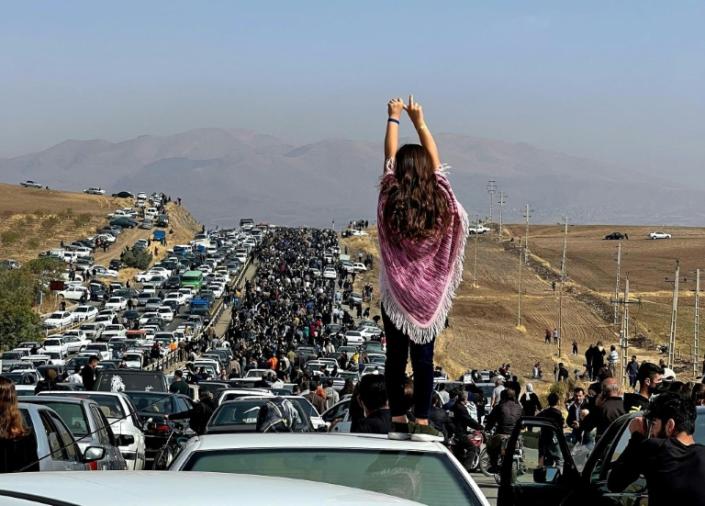
Iran has for the first time reported that more than 300 people have died in over two months of protests sparked by the death of Mahsa Amini in police custody.
The Islamic republic has deployed state security forces against what it labels “riots” that broke out after the 22-year-old died on September 16, three days after her arrest for allegedly breaching Iran’s dress code for women.
“Everyone in the country has been affected by the death of this lady,” said Brigadier General Amirali Hajizadeh of the Islamic Revolutionary Guard Corps (IRGC) in a video published by the Mehr news agency.
“I don’t have the latest figures, but I think we have had perhaps more than 300 martyrs and people killed,” among them some of “the best sons of the country”, said Hajizadeh, head of the Guards’ aerospace division.
The Iranian toll includes those who have taken to the streets as well as dozens of police, troops and Basij paramilitary force members who have died in clashes with demonstrators or who were killed elsewhere.
The latest official toll is much closer to figures published by human rights groups based abroad.
Oslo-based non-governmental organisation Iran Human Rights said at least 448 people had been “killed by security forces in the ongoing nationwide protests”, in an updated toll issued on Tuesday.
The group says its toll includes those killed in violence related to the Amini protests and in distinct unrest in the southeastern province of Sistan-Baluchistan, which borders Pakistan and Afghanistan.
– Hijab rules –
Thousands of Iranians and around 40 foreigners have been arrested and more than 2,000 people have been charged, according to judicial authorities.
Among these, six have been sentenced to death, with their appeals set to be heard by the supreme court.
One more man, identified as Majid Rahnavard, went on trial Tuesday accused of stabbing to death two Basij members in the northeastern city of Mashhad on November 17, Mizan Online reported.
He faces the death penalty if found guilty of killing the pair who, Iranian media reported, had tried to intervene against “rioters threatening businesses to force them to close”.
Since the Islamic Revolution of 1979 that overthrew the monarchy, Iranian law has required all women to wear modest dress and a hijab head covering that conceals their hair, rules enforced by morality police squads that patrol public places.
In the past two decades, however, many women, especially in Tehran and other major cities, have shown more of their hair, before the rules were tightened again — a flashpoint issue in the protests.
Iran has blamed its enemies for the civil unrest, pointing at the United States, other Western powers and Israel, as well as exiled Iranian Kurdish opposition groups based in northern Iraq whom it has hit with repeated missile and drone strikes.
Amid the heightened tensions, Iran’s national football team will play the US side at the World Cup in Qatar from 1900 GMT Tuesday — a match seen as highly political between two countries that have had no diplomatic relations since 1980.
Iran’s judiciary Tuesday announced the release of more than 1,100 detainees in 20 provinces, including protesters, following Iran’s World Cup win Friday against Wales, its Mizan Online website reported.
The site also reported Tuesday the release on bail of former national football team goalkeeper Parviz Boroumand.
Boroumand had been arrested in mid-November during protests in Tehran, Iranian media outlets reported.
ap/sk/dv/hkb




